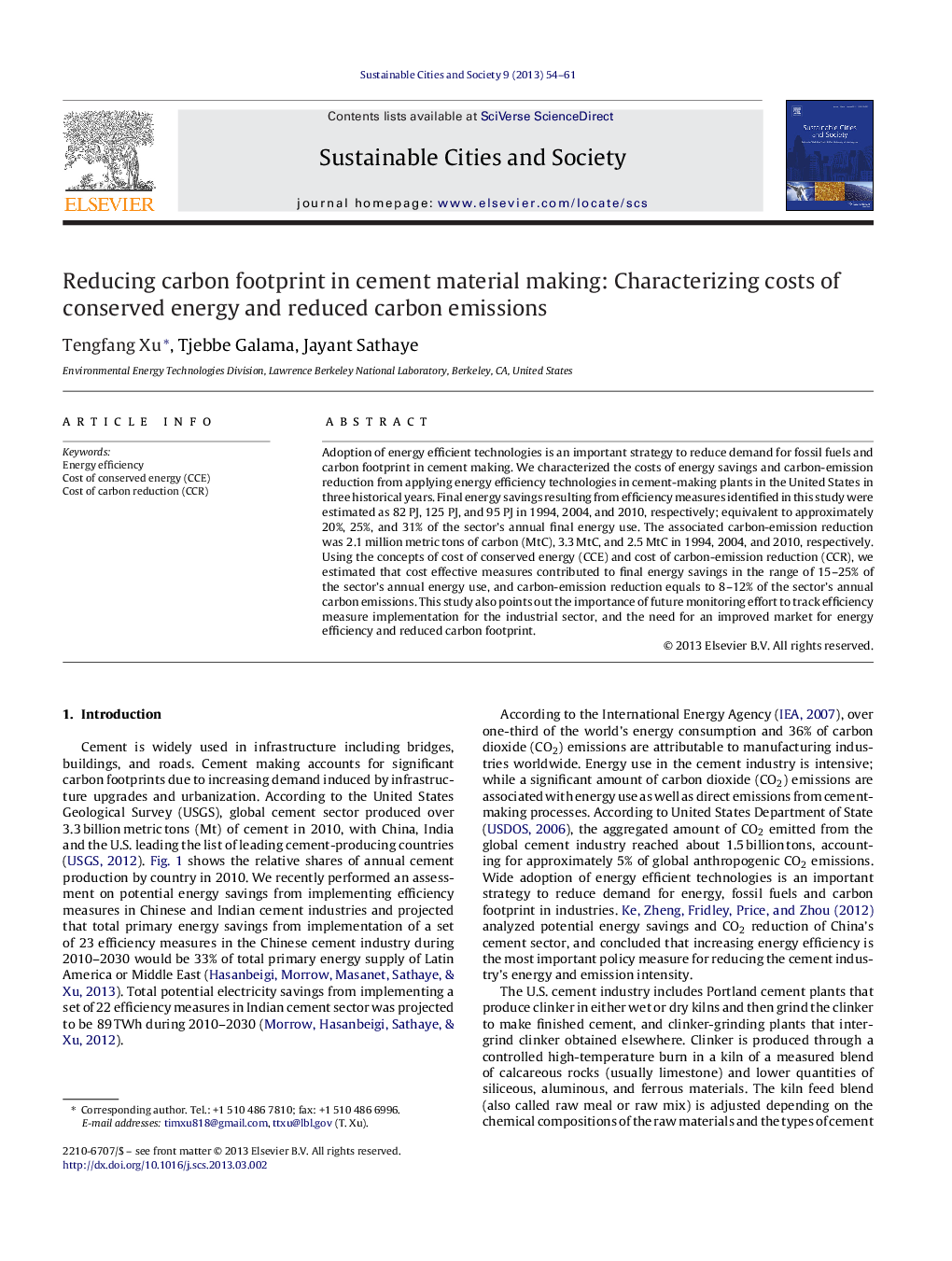| Article ID | Journal | Published Year | Pages | File Type |
|---|---|---|---|---|
| 6776920 | Sustainable Cities and Society | 2013 | 8 Pages |
Abstract
Adoption of energy efficient technologies is an important strategy to reduce demand for fossil fuels and carbon footprint in cement making. We characterized the costs of energy savings and carbon-emission reduction from applying energy efficiency technologies in cement-making plants in the United States in three historical years. Final energy savings resulting from efficiency measures identified in this study were estimated as 82 PJ, 125 PJ, and 95 PJ in 1994, 2004, and 2010, respectively; equivalent to approximately 20%, 25%, and 31% of the sector's annual final energy use. The associated carbon-emission reduction was 2.1 million metric tons of carbon (MtC), 3.3 MtC, and 2.5 MtC in 1994, 2004, and 2010, respectively. Using the concepts of cost of conserved energy (CCE) and cost of carbon-emission reduction (CCR), we estimated that cost effective measures contributed to final energy savings in the range of 15-25% of the sector's annual energy use, and carbon-emission reduction equals to 8-12% of the sector's annual carbon emissions. This study also points out the importance of future monitoring effort to track efficiency measure implementation for the industrial sector, and the need for an improved market for energy efficiency and reduced carbon footprint.
Keywords
Related Topics
Physical Sciences and Engineering
Energy
Renewable Energy, Sustainability and the Environment
Authors
Tengfang Xu, Tjebbe Galama, Jayant Sathaye,
